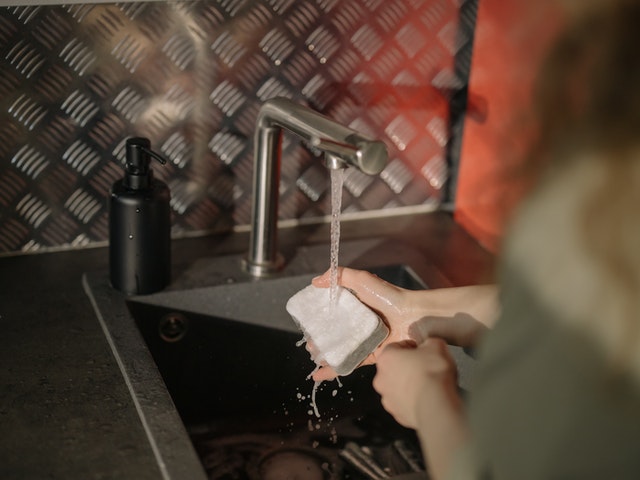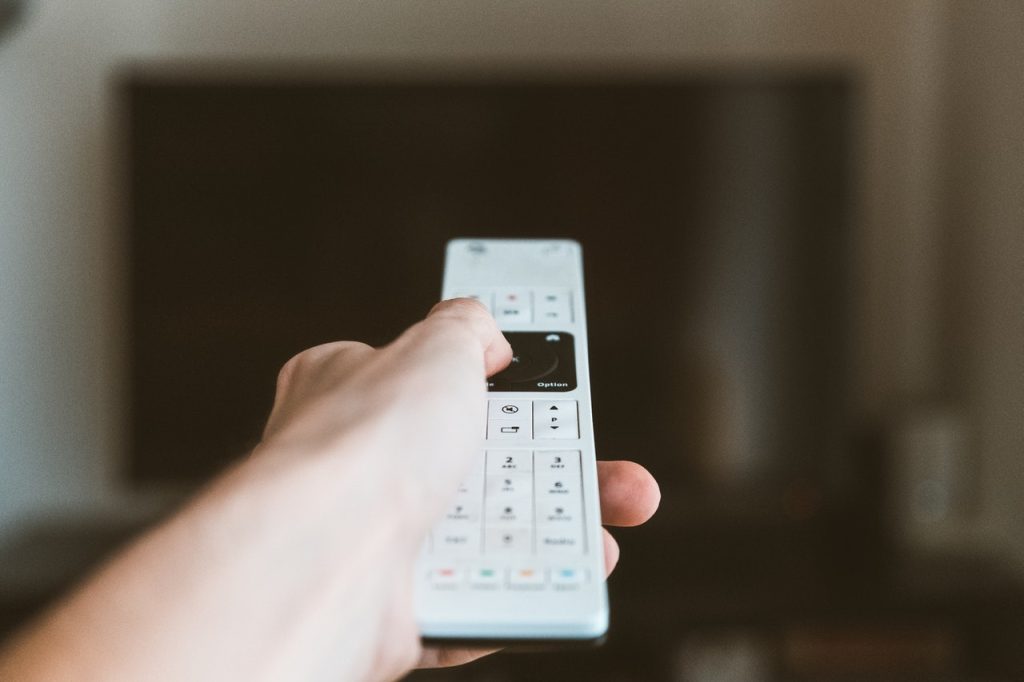If you think the toilet bowl is the dirtiest part of your home, think again. Believe it or not, many objects around your house are teeming with germs and bacteria, and you touch them all the time, not knowing that they are breeding grounds for harmful microorganisms.
One 2016 study on contaminated household objects discovered more than 340 different bacteria thriving on 30 different things. Most of these objects don’t look dirty and are found in places you consider clean. You wouldn’t even think about washing your hands after touching them.
Here are some of the dirtiest things around your home that require some deep cleaning!
The 10 Dirtiest Things in Your Home
1. Cutting Boards
Cutting boards are used for numerous purposes, from cutting raw meat and vegetables to slicing fruits and cheeses. If not cleaned and stored correctly, they can be a source of cross-contamination that may result in food poisoning.
One study showed that cutting boards that are not cleaned well and replaced due to wear and tear can be 200 times filthier than a toilet seat. So, to lessen the risk of cross-contamination, don’t chop celery and slice mangoes on the same cutting board you use to cut up raw beef.
Have dedicated cutting boards for meat, chicken, fruits, and vegetables. Moreover, it’s essential to clean each one after use, especially the boards reserved for cutting raw meat. Wash it with dishwashing soap and hot water and then air dry it. You can also disinfect it using a diluted bleach solution daily.
However, cleaning and disinfecting cutting boards can only do so much. Therefore, when you are starting to notice grooves and other signs of damage from repeated use, it’s best to replace them completely.
2. Sponges and Dishcloths
Often named the dirtiest part of every home, the kitchen sponge is the favorite playground of gross bacteria because of its warm and moist surface. 2017 research detected coliform in 44% of the kitchens tested, and most of the bacteria were found in sponges and dishcloths.
S. aureus, E. coli, and salmonella are also generally found on kitchen sponges and towels and can survive on them for many days: up to 16 days on sponges and approximately 13 days on microfiber towels.
So, how do you clean sponges? The most effective way to disinfect them is to microwave them for one to two minutes. The USDA says that this method kills 99.99% of the bacteria.
While cleaning kitchen sponges is good practice, using them for an extended period can still spread dangerous bacteria around your kitchen. Replace them every two weeks. Dishcloths, on the other hand, should be washed more frequently.

3. Kitchen Sinks
The kitchen sink is one of the dirtiest things in your home, next to the notoriously gross sponge. Due to high moisture levels, lots of dangerous microorganisms thrive in this spot. Microbiologist Charles P. Gerba even considers it dirtier than a toilet seat.
Unfortunately, even if your sink looks sparkling clean, it still hosts germs and bacteria that can make you and your family sick. Spraying with a disinfectant and rinsing every week is not enough. If possible, scrub it with water and soap daily. When it comes to sanitizing, one method you can do is plug the drain, fill the sink with warm water and then put one tablespoon of bleach. Let it sit for about five minutes, and then rinse.
4. Toothbrushes and Toothbrush Holders
A single toothbrush can hold over 100 million bacteria, including the flu virus, E. coli, staph, and yeast fungus. And it’s not only your toothbrush. Coliform, an indication of fecal contamination, was found in 27% of toothbrush holders, while 14% had staph bacteria.
Since toothbrushes and their holders are usually kept close to the toilet, they get sprayed with fecal matter when flushing with the lid open. Thanks to our immune systems, getting sick from using a toothbrush with a mouthful of germs is highly unlikely. But getting ill is always a possibility, so make sure to clean both your toothbrush and its holder regularly.
Rinse your toothbrush’s bristles thoroughly after brushing. You must also disinfect it once a week by soaking it in an antiseptic mouthwash or hydrogen peroxide solution for around 15 minutes to eliminate most of the germs.
If you are using a specific toothbrush daily, replace it every three to four months. However, those toothbrushes you only use for leisure travel and business trips can be replaced every six months.
As for the holder, clean it by soaking it in hot water and dishwashing soap for about 10 minutes once every two weeks. Then, use a soft, clean cloth to get rid of all the residue inside and outside.
5. Refrigerator Handles
Refrigerator handles are heavily loaded with bacteria, as they’re constantly touched by greasy, dirty hands while preparing food. One study confirmed that fridge handles in multiple households have coliform, mold, yeast, and staph bacteria. It’s one of the grimiest things in your home that is, unfortunately, rarely cleaned.
Once every two weeks, clean the handle using a damp cloth or sponge, focusing on the greasiest points. Once it’s clean and dry, spray it with an antibacterial cleanser.
It’s not just the refrigerator handle that needs love and upkeep, though. Deep clean the entire refrigerator every two months, wash all food trays with hot, soapy water, and wipe down drips and spills with a damp cloth.
6. Mobile Phones
We touch our mobile phones thousands of times a day. We wouldn’t even think twice about using them while on the toilet and eating at the dining table. It is, indeed, a hotbed for streptococcus, E. coli, the antibiotic-resistant MRSA, and other disease-causing viruses and pathogens.
University of Arizona scientists found that mobile phones hold 10 times more bacteria than most toilet seats. Your phone may look clean and pretty as ever, especially with a new case, but it’s covered in germs that can lead to food poisoning, pneumonia, diarrhea, and skin infections.
Regularly clean it with antibacterial wipes or a soft cloth sprayed lightly with 70% isopropyl alcohol and water mixture. Do it at least once a day. It’s also highly recommended to remove its case and give it a more meticulous cleaning once every two weeks.

7. Keyboard
How often do you clean something that you constantly use for work?! If you spend most of your day in front of your computer, eating while working, sneezing in front of it, and touching it without washing your hands, then your keyboard is clearly contaminated. And it’s even more contaminated if you’re sharing it with other people.
An Australian study found that keyboards shared by multiple individuals tend to have more bacteria than those only used by one person. Naturally, you wouldn’t want to transfer all of these germs and viruses to your roommates or family members.
With repeated use, dirt can get stuck on the keys and sensors. Cleaning it will not only protect you from allergies and illnesses. It can prolong your keyboard’s life, too.
Turn the keyboard upside down, shake it gently, and let all the residue fall out. To clean the remaining dirt between the keys, use a cotton swab or a small cloth sprayed with 70% isopropyl alcohol. You can also use a toothbrush dedicated to keyboard cleaning to get all the grime stuck in between the keys.

8. TV Remote Control
Everything we touch several times a day has germs on it. That includes the TV remote control, another item that we usually share with roommates or family members. We even drop them on the floor and touch them while eating chips or popcorn. But, the most astonishing thing is that we rarely clean them, making them one of the dirtiest things in your home.
67% of households admitted to never cleaning and disinfecting their TV remote controls. These items are home to a considerable amount of yeast and bacteria, making them 20 times dirtier than a toilet seat.
To prevent the accumulation of germs, clean the TV remote control once a month. But cleaning and disinfecting more often than that is essential if another person in the household is sick and using the television.
Mix four tablespoons of bleach or 70% isopropyl alcohol into a quart of water. Next, dip a soft towel in this disinfecting solution and wipe the remote control’s surface.

9. Purse
With all the coins, paper money, and receipts that go into it, the purse or wallet you take to work and on weekend adventures is a major hub of harmful bacteria. Since you take it with you everywhere you go and constantly touch it without washing your hands, it is, undeniably, a breeding ground of germs inside out.
One study by the National Institutes of Health shows that purses and some wallets are full of bacteria. 95% of the 138 wallets and purses swabbed were contaminated with bacteria, with the straps and handles having the highest concentration.
Although the bacteria discovered in this research don’t cause diseases, it’s still essential to disinfect your purses once in a while to reduce cross-contamination risks.
There is no single way of cleaning purses. For example, if you have a leather purse, you can clean it by wiping the exterior part of the purse with a soft cloth soaked in dish soap and a warm water solution.
Use this same solution to clean the interior part of the purse after emptying it and getting rid of the loose debris. Do this around once a week. Deep cleaning and conditioning, meanwhile, must be done every three to four months.
10. Keys
The cute keychain you’re using is most likely covered in several types of bacteria that threaten your health. You touch your keys before and after shopping, filling up your tank, and eating out. Germs are constantly being passed back and forth between your keys and you.
Cleaning your keys is not only about keeping them shiny and clean. Rust may appear when the keys are exposed to a lot of moisture, changing their shape and causing problems when you try to fit them in a lock.
Keep the germs at bay by cleaning your keys once a week. You can either wipe them using antibacterial wipes or wash them with hot water and soap.
Start Cleaning Today for a Healthier You
Amid the COVID-19 pandemic and flu season, cleaning and disinfecting our homes is more important than ever. Now that you know that dirt, germs, and bacteria live in the most unexpected places, set a regular, more thorough cleaning schedule to keep everyone around you safe and healthy.













